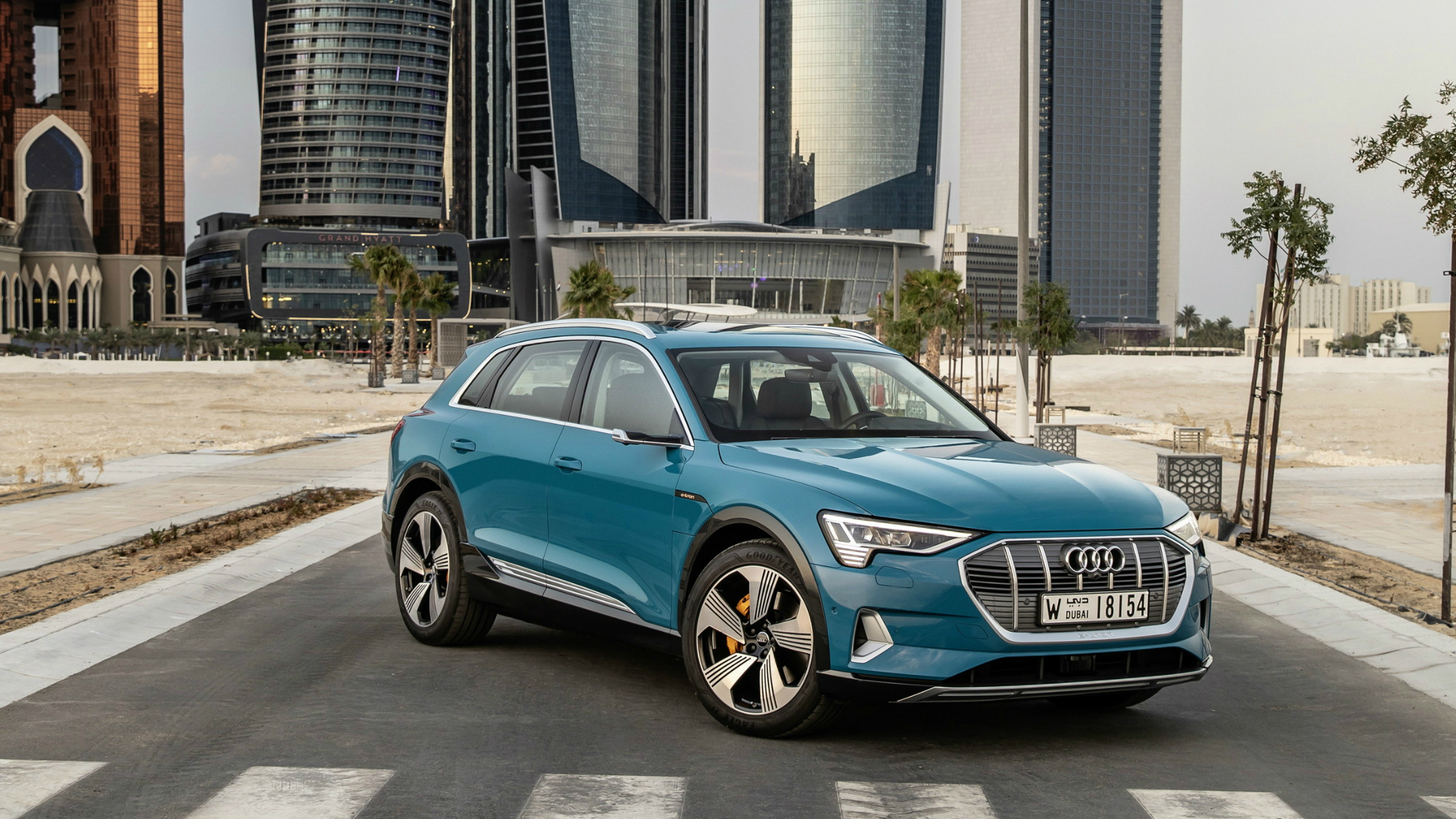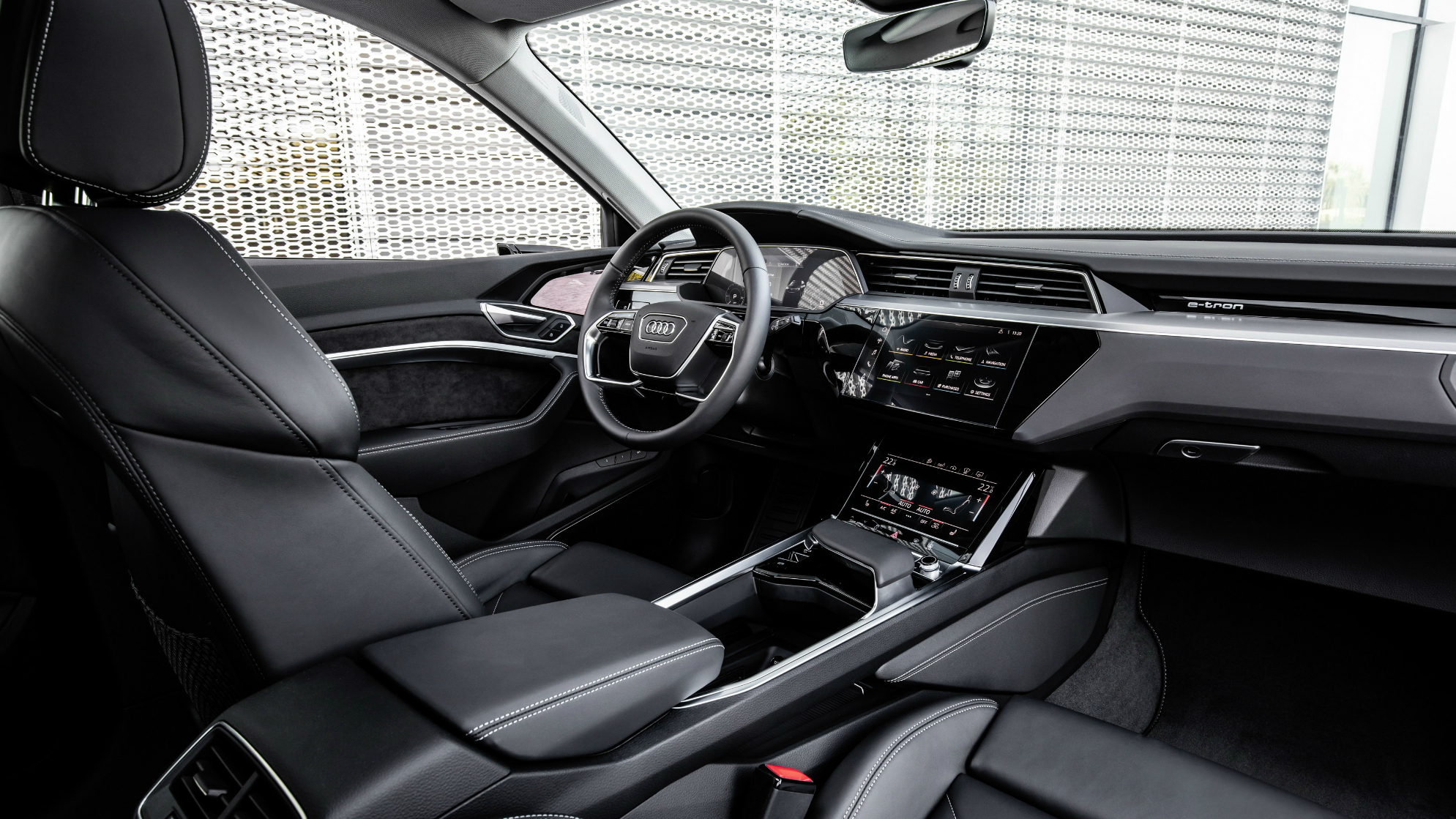'The floodgates are now open for electric vehicles': Introducing the new Audi E-tron
The Audi E-tron is the latest SUV to stir up the electric car market - but how does it fare in comparison to its petrol-fuelled rivals?

Words by Erin Baker, Editorial Director at Auto Trader
Hot on the heels of the Jaguar I-Pace, and quite a long time after Tesla’s Model X, comes the Audi E-tron, an electric SUV. The floodgates are now open for electric vehicles (EVs), with Mercedes’ ECQ electric SUV also out now and plenty more to follow. But is the time right to buy electric?
Style
To the naked eye, there isn’t much to differentiate this car from a petrol Audi Q5 or Q7 SUV, which is probably just as well - no one wants to scare the horses by suggesting that electric cars are a whacky, tricky purchase - “Think Normal” is the phrase du jour.
A few telltale signs are there - the rear has a futuristic taillight bar stretching across it, and there’s a charging port where the fuel filler cap would be, plus the front headlights are a bit more mean-looking, but, er, that’s about it.
Inside is a similar story: all standard Audi fare although the automatic gear-lever is a very funky horizontal bar, and there are two big digital touchscreens plus another digital display behind the steering wheel instead of dials.
Tech
A rear-view camera and parking sensors come as standard, and a 360-degree camera is an option (one we’d recommend for reverse parking). You can also specify - wait for it - virtual door mirrors which replace the wing mirrors with cameras mounted on the doors which project the view on door-mounted screens. An impressive toy.
There’s the usual DAB, Bluetooth and very good Audi satnav, plus you can toggle across the screen to see how much electric charge you have left. The car will also recommend ways to save the available mileage, by showing you just how many miles of range you’re wasting on, say, aircon.
Celebrity news, beauty, fashion advice, and fascinating features, delivered straight to your inbox!

Comfort
This is a big car which, while it doesn’t make for easy manoeuvring around town, does mean there’s plenty of space on the inside for five adults and luggage in the boot. A handy touch is the button in the boot to lower the rear seats so you can load bigger items. There’s also a pleasingly wide centre console with loads of room to bung your purse and phone in.
Being electric also means you get that trademark silent ride which leaves you more relaxed at your destination.
The suspension is wonderfully set up to counter-balance the added low weight of the battery pack, and the kids and I enjoyed floating over speed humps on the way to school.
Power
The E-tron has two electric motors - one for the front wheels and one for the rear, producing 400 horsepower between them, which is plenty for a premium motoring experience. The 0-62mph sprint is a claimed 5.7 seconds when you put the car into Sport mode: in reality that translates into plenty of confidence when overtaking other vehicles.
As for the all-important range: it’s about 240 miles, which isn’t quite as good as the Jaguar I-Pace’s 290 miles, but it will be fine if you have a wallbox mounted at home and one at work, too.
Charging couldn’t be simpler: you release a bonnet catch to retrieve your cable and plug, push one end into the charging point on the car which is revealed by a nifty sliding door, and plug the other end into the power source (I charged it overnight on a three-pin domestic socket in my garage which was painfully slow and gave me enough for the 12-mile school run - you’ll definitely need a wallbox installed). Locking the car locks the cable in place so you can walk away, and a little light by the plug glows green on and off while it’s charging.
Price:
As with all EVs, there’s a hefty upfront price to pay, not helped by the government knocking £1,000 from its £4,500 grant. But you’ll immediately start to recoup that money in running costs - the industry reckons an EV will cost you on average 3-4p per mile to run, while a petrol or diesel will be more like 7-8ppm.
The E-tron has a sticker price of £71,420, which is about £20,000 more than the bigger Q7 starts at, and makes it more expensive than the Jaguar I-Pace but less so than the Tesla Model X. But its resale value is predicted to remain high and the battery is covered for 8 years, or 100,000 miles, whichever comes first.
The leading destination for fashion, beauty, shopping and finger-on-the-pulse views on the latest issues. Marie Claire's travel content helps you delight in discovering new destinations around the globe, offering a unique – and sometimes unchartered – travel experience. From new hotel openings to the destinations tipped to take over our travel calendars, this iconic name has it covered.